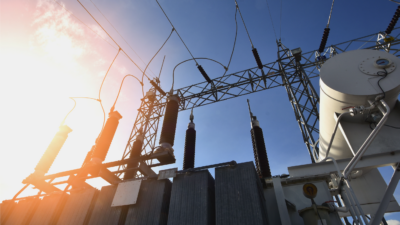Crabby electrolytes and seaweed separators are making a big splash in sustainable, high-performance batteries.
Battery waste is an increasingly critical concern as the demand for battery-powered devices, energy storage systems and electric vehicles (EVs) continues to rise. Most batteries contain toxic chemicals and environmentally harmful materials, and their improper disposal can lead to severe environmental and health hazards.
As such, there is a need to develop sustainable recycling solutions to manage the growing heap of used batteries and minimize their environmental impact. As a potential solution, some researchers are looking under the sea to find environmentally friendly materials for greener batteries—and they’re coming up with treasure.
Crabby batteries
In September 2022, researchers from the University of Maryland developed a zinc battery with a biodegradable battery electrolyte using chitosan, a material derived from crab shells. The promising results were published in Cell Press by Wu et al.
Today’s battery electrolytes, which transfer ions back and forth between battery electrodes, typically comprise flammable or corrosive chemicals. In contrast, the crab-based electrolyte material is non-toxic, non-flammable, and a natural material that’s readily available (just watch out for pincers).

Chitosan is a biopolymer derived from chitin, which is extracted from the exoskeletons of crustaceans like crabs and shrimp. Microbes can decompose chitosan within five months, leaving behind the recyclable metal zinc rather than lead or lithium.
And it’s not just good for the environment. The researchers found that the chitosan electrolyte makes a pretty good battery, too, with high ionic conductivity and good thermal stability. The researchers’ chitosan-based zinc batteries demonstrated good performance, high energy density and a long life cycle.
Although this biodegradable technology is still in the experimentation phase, it has the potential to replace conventional battery electrolytes to enable greener and more sustainable energy storage.
Seaweed could save sodium-ion batteries
Researchers from the University of Bristol are on the way to solving the biggest issue of sodium-ion batteries, one of the most promising alternatives to lithium-ion batteries. Though sodium-ion batteries have a high energy density and low cost, they suffer from drawbacks including a limited life cycle due to uncontrolled sodium dendrite growth.
Dendrites can penetrate through the battery separator and contact the battery’s cathode, causing an internal short circuit. The Bristol researchers looked for a way to improve the separator—and perhaps they were eating sushi when the inspiration struck to use seaweed.
Traditional lithium-ion batteries use polypropylene and polycarbonate separators, but these materials take thousands of years to degrade. The Bristol researchers developed a new separator using cellulose nanomaterials derived from brown seaweed. The seaweed-based separator not only enables a more efficient sodium-ion battery, but a more environmentally friendly battery as well.
The separator is an important part of the battery. It divides electrodes, preventing contact between cathode and anode, and enables free transmission of charge between them. The seaweed-based cellulose nanomaterials make the separator strong enough to resist dendrite penetration, one of the issues preventing widespread adoption of sodium-ion batteries.
Cellulose nanomaterials can be an effective alternative to costly and non-biodegradable carbon nanotubes. The seaweed-based material is widely available, low-cost and environmentally friendly since it’s biodegradable.
Battery separators made from seaweed have the additional advantages of being flexible, easily adjustable and thermally stable. Good mechanical properties are crucial for battery separators to prevent deformation under high temperatures. In case of thermal runaway, this prevents a short circuit, ensuring stable and safe battery operation under a wide operating temperature range.

In their experiments, the University of Bristol researchers found the seaweed separator resistive to penetration by dendrites from the sodium electrode. Their battery made with the separator showed high operating performance, with a long cycle life of over 1000 cycles (with 0.037 percent capacity fading per cycle). The researchers published their work in September 2022 in Advanced Materials.
The seaweed separator can also be effectively used in other battery types, such as zinc, aluminum, calcium and magnesium metal-based batteries. Given the environmental friendliness and low cost of the material alongside its promising results, this work provides a good base for future, greener batteries.
What other material treasures might the sea hold in store? Whatever it is, battery researchers may have to get a little wet for the next big breakthrough.



